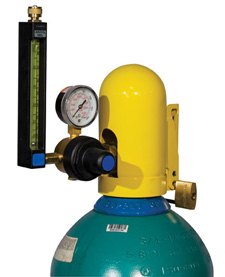| The Home page of ILPI's Safety Data Sheet (SDS) Resource, the leader in SDS information since 1995! | |
| The history and philosophy behind this resource. | |
| A curated collection of books and reference materials concerning Safety Data Sheets and closely related topics. | |
| Paste your plain text SDS into the SDS-Demystifier, and it will be converted into a hypertext-enriched document with links to detailed explanations of each key term. | |
| An extensive list of frequently asked questions about Safety Data Sheets including regulations, content, compliance, and more. | |
| A humorous take on Safety Data Sheet jargon. Fill in the blanks on our entry form to generate a personalized Unsafety Data Sheet to share with your coworkers. | |
| Since 1995, we've maintained this massive curated list of the best places to find Safety Data Sheets on the Internet. | |
| You are here! Way more than a glossary, this hypertext-enhanced resource covers hundreds of SDS-related terms and expert knowledge. Each entry includes both the SDS relevance and links to additional authoritative resources. | |
| Archived results of Safety Data Sheet related polls taken by some of our millions of site visitors | |
| The OSHA regulations behind SDS regulations, including the inspection guidelines and over 400 official interpretations letters under the Hazard Communication Standard | |
| Commercial suppliers of SDS authoring and management software as well as cloud compliance services. | |
| Commercial companies that will create SDS's for your specific needs as well as SDS translation companies. |

Safety signs, banners, and scoreboards? Get yours at Safety Emporium!
Definition

Safety Emporium has a great lineup of gas cylinder signs, storage racks, lockouts, clamps and more.
A hydrocarbon is an organic chemical compound that is comprised only of carbon (C) and hydrogen (H) atoms.
Many oils, fats, waxes, solvents and paraffin are either hydrocarbons or contain large hydrocarbon sub-units.
Additional Info
Hydrocarbons can be divided into particular classes depending on their properties. Some examples are:
- Aliphatic versus Aromatic
- Cyclic versus non-cyclic (or acyclic)
- Saturated versus Unsaturated
- Alkanes versus Alkenes versus Alkynes
- A saturated hydrocarbon is called an alkane. The suffix "ane" in a hydrocarbon name denotes an alkane.
- A hydrocarbon with a double carbon-carbon bond is called an alkene. This is also called an olefin using older terminology. The suffix "ene" in a hydrocarbon name denotes an alkene.
- A hydrocarbon with a triple carbon-carbon bond is called an alkyne. This is also called an acetylene using older terminology. The suffix "yne" in a hydrocarbon name denotes an alkyne.
- Note: These are for simple molecules only. Systematic names are much more involved. See the IUPAC link below for systematic naming rules.
- Branched vesus Linear (Straight)
- Hydrocarbon chains that are completely linear are called normal alkanes. These are given the prefix n-, although this is often omitted.
- Hydrocarbon chains that contain a carbon atom connected to three other carbon atoms are given the prefix iso.
- Hydrocarbons that contain a carbon atom connected to four other carbon atoms are given the prefix neo.
Hydrocarbons (or other organic molecules) that form a ring are called cyclic. Those that do not have rings are called acyclic or non-cyclic. For example, cyclopentane (C5H10) is cyclic, while pentane (C5H12) is acyclic:

Note: The terms "saturated" and "unsaturated" also refer to the concentration of solutions. These have a much different meaning and context.
A saturated hydrocarbon (or other organic molecule) has utilized all of its bonding electrons to make single bonds to other atoms. It can not make additional bonds without removing an existing bond to another atom or group of atoms in the molecule.
An unsaturated hydrocarbon (or other organic molecule) contains double or triple bonds between certain atoms. These bonds may be broken and new atoms or groups of atoms attached without disrupting the existing skeleton of the hydrocarbon.
If a molecule contains a saturated hydrocarbon sub-unit, this sub-unit is called an alkyl group. If the sub-unit is an aromatic group this sub-unit is called an aryl group.
For carbon, the maximum (and ideal) number of bonds is four. Let's look at an example. trans-3-hexene is unsaturated because the atoms shown in red have two bonds connecting them and are bound to only three different atoms. If we chemically add hydrogen atoms to the red carbons, this reduces the carbon-carbon double bond to a single bond and gives the red carbons four single bonds to other atoms. The resulting molecule, hexane (also called n-hexane), is saturated because we can not add any more atoms to it without removing bonds to existing atoms or groups of atoms.


Safety Emporium has the solution to your laboratory needs with an extensive line of glassware.
You may have heard the terms monounsaturated, polyunsaturated, and saturated in reference to fats and oils. Saturated fats (no double bonds) contain long hydrocarbon sub-units (alkyl groups). Examples are coconut oil and lard, which have a tendency to clog your arteries because of their chemical and physical properties. Unsaturated fats, those with one (mono) or many (poly) double bonds, are less likely to form artery-clogging plaques.

The following prefixes are commonly used for simple hydrocarbons, but are not part of the systematic naming scheme used by chemists. For systematic naming rules (vital to name a hydrocarbon with more than one branch!), see the IUPAC link below.

The molecules shown above have the same chemical formula (C5H12), but a different arrangement in each case, so we call them isomers. These isomers of pentane have different chemical reactivity and properties because of their different molecular arrangements. For example n-hexane is a neurotoxin while neohexane is not.
SDS Relevance

Be compliant with confined space products from Safety Emporium.
Pay close attention to the name of the chemical with which you're working so you don't end up consulting the wrong Safety Data Sheet. As noted above, pentane and isopentane are two completely different chemicals.
Hydrocarbons and their chemical derivatives are often quite flammable. Many of these are toxic or present other health hazards. If possible, substitute a less hazardous solvent.
Always wear proper gloves and eye protection when working with hydrocarbons or organic chemicals. Be sure to wear an appropriate respirator if ventilation is not adequate, and be careful to avoid ignition sources as the vapors can easily reach their flammable limit. When dispensing bulk quantities of flammable liquids, proper bonding and grounding procedures must be followed to avoid the formation of static electricity which could ignite the vapors.
"Empty" hydrocarbon tanks pose two specific dangers. First, if it is a large tank, the heavier-than air vapors can create an oxygen-deficient atmosphere that is immediately dangerous to life and health. Proper confined space entry procedures should be developed and used for any tank large enough to be entered. Second, there are dozens of examples where workers have been killed or injured when they accidentally ignited residual vapors in an "empty" tank by welding, cutting, or grinding. See the links below for examples and precautions.
Further Reading

Hold on to your reaction with laboratory clamps and accessories from Safety Emporium.
- IUPAC (International Union of Pure and Applied Chemistry) nomenclature rules on how to name hydrocarbon molecules.
- The Reactions of Alkanes, Alkenes, and Alkynes at Purdue University.
- Hydrocarbon Poisoning at the Merck Manual Professional version. The Consumer version is also available.
- How Do I Work Safely with Flammable and Combustible Liquids? (Static Electricity) from the Canadian Centre For Occupational Health & Safety.
- A NIOSH-OSHA Hazard Alert Health and Safety Risks for Workers Involved in Manual Tank Gauging and Sampling at Oil and Gas Extraction Sites.
- Hydrocarbon releases: consideration of acute health effects at the UK's Health and Safety Executive.
- Hydrocarbon Toxicity, A StatPearls entry at NIH
- Action Page - Protecting Oil & Gas Workers From Hydrocarbon Gases & Vapors> at the California Dept of Public Health.
- OSHA's confined space web site is full of information about complying with standards and protecting workers.
- The US Chemical Safety Board has a list of Safe Hot Work Practices which contains links to useful fact sheets and incidents. Also check out their videos (search on "hot work).
See also: aliphatic, aromatic, flammable limits, organic.